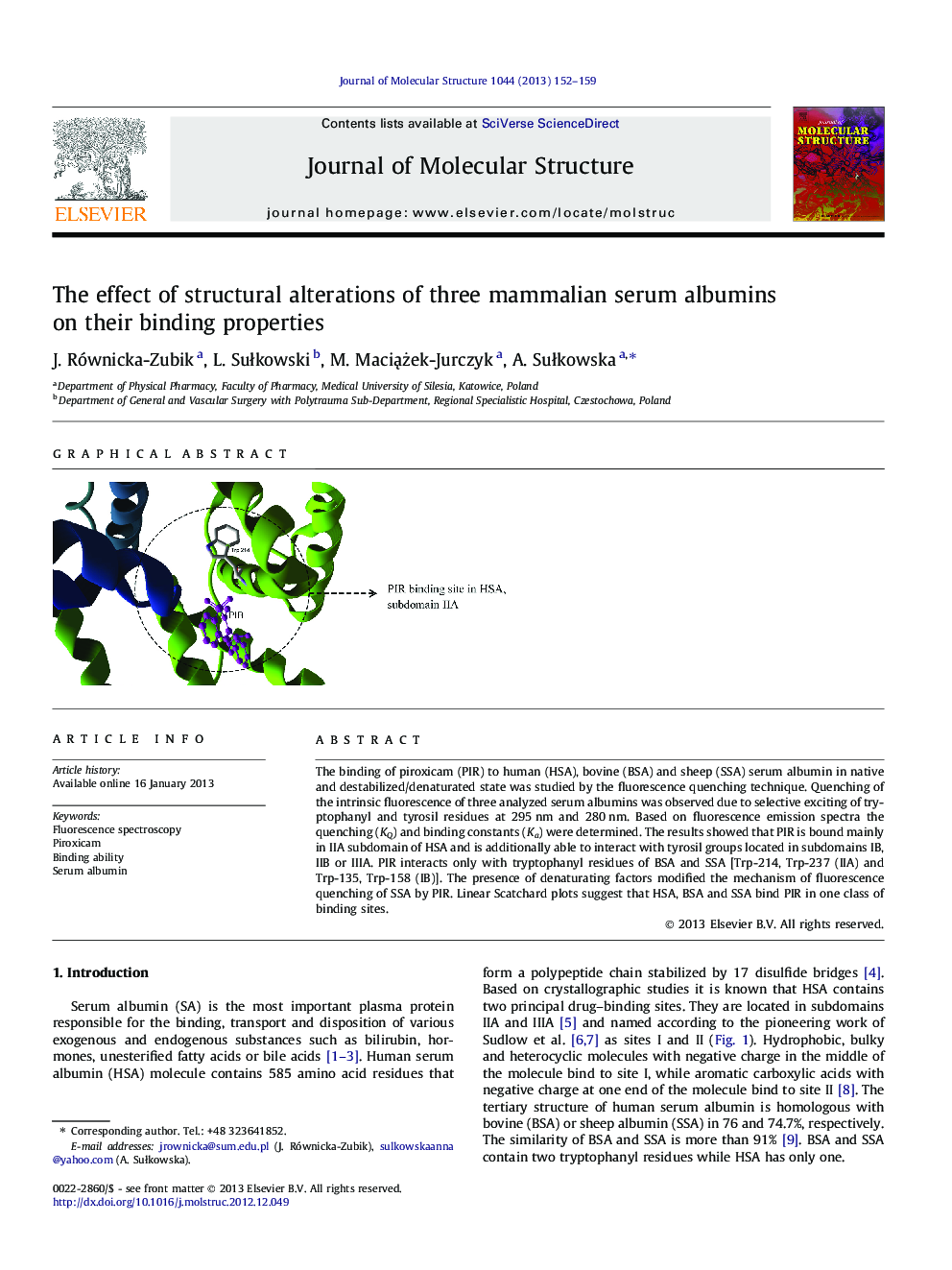| Article ID | Journal | Published Year | Pages | File Type |
|---|---|---|---|---|
| 1408754 | Journal of Molecular Structure | 2013 | 8 Pages |
The binding of piroxicam (PIR) to human (HSA), bovine (BSA) and sheep (SSA) serum albumin in native and destabilized/denaturated state was studied by the fluorescence quenching technique. Quenching of the intrinsic fluorescence of three analyzed serum albumins was observed due to selective exciting of tryptophanyl and tyrosil residues at 295 nm and 280 nm. Based on fluorescence emission spectra the quenching (KQ) and binding constants (Ka) were determined. The results showed that PIR is bound mainly in IIA subdomain of HSA and is additionally able to interact with tyrosil groups located in subdomains IB, IIB or IIIA. PIR interacts only with tryptophanyl residues of BSA and SSA [Trp-214, Trp-237 (IIA) and Trp-135, Trp-158 (IB)]. The presence of denaturating factors modified the mechanism of fluorescence quenching of SSA by PIR. Linear Scatchard plots suggest that HSA, BSA and SSA bind PIR in one class of binding sites.
Graphical abstractFigure optionsDownload full-size imageDownload as PowerPoint slide
